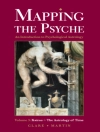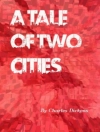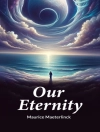Daniel is gay, bi-polar, HIV positive, and has substance abuse issues. If you know a person with some or all of these various diagnoses, each one must be treated separately, but also as part of the whole person. Especially if you have a loved one with challenges—the truth and soul bearing in this book will benefit you—giving you insights and ideas how you can help. Learn from Daniel’s pain, and learn from his therapist who is a big part of his emotional growth and his acceptance of who he is, and who he can be every day. Laugh along when it is funny, wiping away tears of joys, or when his “shadow” side shows up and life goes awry, shed tears of sadness. Know what he knows—that with love of his family, help of his therapist, the right medications, and a strong will to be balanced every day, Daniel can live a productive and safe life.
When Daniel was challenged by first revealing, and then living safely with his sexual orientation (and quickly becoming HIV-positive), his rollercoaster life needed to address the complexities of these issues and the role played by his feelings of shame, guilt, fear, anxiety, depression, and self-defeating behaviors. Daniel is willing to be honest and open with his new therapist—and he is also motivated to change. She is always a good listener and so patient, offering readers some piercing insights into Daniel and others like him. Her therapy is Humanistic-Existential based, and focuses on the adult LGBT community, many of whom are HIV-positive, and have co-occurring diagnoses of chemical abuse, (particularly crystal methamphetamine) and mental illness.
The shared telling of Daniel’s story will benefit readers who have a loved one who is dealing with one or several of the same issues. The reader will gain understanding, patience, insights and learn better ways to care for and support their loved one during his time of change, growth, chaos and trauma. We must love the whole person and not focus on his sometimes off-the-wall behaviors. A good therapist will work with the individual and not allow these behaviors to simply identify him. Surpassing the Shame reminds us that we must advance our humanness in an effort to be more open and accepting if one of our family members or intimate community is affected.
สารบัญ
Table of Contents
Foreword 1
1 My First Manic Episode–Age 18 3
2 Therapy: All Roads Lead Somewhere 9
3 Acknowledging Being Gay—and Diagnosis of Bipolar 17
4 Encountering Abusive Men in Gay Lifestyle 23
5 Detour on Road to Marrying Mason 29
6 My Husband Insists I Enter Treatment 39
7 My Treatment Program—and Sober-house Living 45
8 HIV-positive and a New Therapist 57
9 Depression, Mania, and Medication 73
10 Religion and Spirituality 79
11 Watching His Words 85
12 Let’s Talk About Sex, Shall We? 93
13 The Letting-Go Process 99
14 Shame-Based Feelings 109
15 Meeting Brian Garland, the Love of My Life 117
16 The Two Ends of the Co-Dependence Continuum 123
17 The “Bipolar Curse” 133
18 Personality Type to Understand Yourself 139
19 Extremes of Bipolar Disorder: Rage and Shame 147
20 The Black Hole of Depression 155
21 Mania Is More… 161
22 The 12-step Program: Daniel’s Point of View 171
23 What is the Harm-Reduction Model? 191
24 Spirituality and Addiction…and Masturbation 199
25 Medications for Bipolar and HIV 209
26 Correlation Between What We Put into Our Body— 213
and How It Functions
27 “Living” on Welfare Payments 229
28 Importance of Trust and Acceptance in Your Life 237
29 Moving Far Away to “Back Home” 245
30 Myths and False Beliefs 257
Important Points to Remember 259
About the Authors 263
Reading Resource List 267
Acknowledgments 273
Addendums for Therapists 277
List of Prescription Drugs/Brand Names 287












